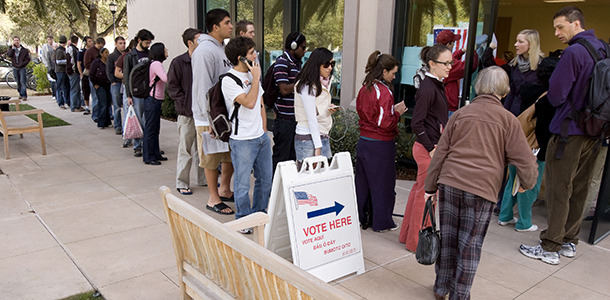
Are the political reforms that Californians approved having an effect? Increasingly the answer seems to be yes.
The latest example was a special election for the vacant 7th Senate District in the East Bay of the San Francisco Bay Area. It pitted what the San Francisco Chronicle’s John Diaz called “Centrist Democrat Steve Glazer over the more doctrinaire (liberal) Susan Bonilla.”
That’s right–two Democrats in the runoff. That’s because in 2010, Californians, sick of the hyper-partisanship that had paralyzed state government, passed Proposition 14–which gave every voter the right to vote for all candidates in primary elections, giving politicians an incentive to appeal to all voters in their districts.
The San Francisco Chronicle and the San Jose Mercury News both wrote opinion pieces over the Memorial Day weekend that indicated they think the open primary was a big reason for Glazer’s win.
The Chronicle’s Diaz pointed out that the 7th District results are important because of the district’s similarity to California’s overall political makeup; “It bears an uncanny resemblance to the voter registration of the state: 43 percent Democrat, 28 percent Republican, 22 percent no party preference.”
The Mercury News flatly declared that Glazer better reflects the 7th District, but wouldn’t have made the runoff, if not for the reforms voters have passed:
“What’s right is that Glazer, a candidate representing the moderate philosophy of the suburban East Bay, prevailed. It wouldn’t have happened but for two voter-approved reforms: legislative districts drawn by a citizens redistricting commission without consideration for preserving incumbents — a system threatened by a pending U.S. Supreme Court case — and the open primary that allows centrists like Glazer to make it to the runoff.”
(Here’s the entire Mercury News piece)
Now here’s what is important to remember about top-two primaries and citizens redistricting: The political parties hate them. The change that is occurring unsettles the status quo.
The Chronicle’s Diaz highlighted the same point made by a leading California political observer:
“It’s changing,” said Allan Hoffenblum, publisher of the California Target Book, which tracks elections statewide. He suggested the top-two primary, which allows the top two finishers to advance to the general election regardless of party affiliation, is having its intended effect of helping candidates, like Glazer, who are willing to appeal across party lines.
No one, including Glazer, disputes that he would not have had a chance in a Democrat-only primary. Hoffenblum said the phenomenon similarly has elevated the chances of centrist Republicans.
“That’s why both the left and the right hate the system,” Hoffenblum said.
Glazer’s victory came because he was able to attract centrist Democrats and Republicans, which Diaz said “could provide a template for statewide Democratic candidates in the event that two emerge in a general election.”
Don’t think this happened because the voters weren’t aware of the choice between Glazer and Assemblymember Susan Bonilla. A staggering $10 million was spent in the campaign. ($10 million to get elected to the state Senate? That’s a topic for another blog.)
Leave it to former Assembly Speaker and San Francisco Mayor Willie Brown to put it in perspective as he did in a column for the Chronicle:
“Like it or not, the Glazer-Bonilla battle is likely to be the template for future elections statewide. The top-two primary system has taken elections out of the hands of party insiders and allowed competing Democrats and Republicans to strike out on their own to attract crossover voters.”
California Forward and the California Forward Action Fund supported the top-two primary and citizens redistricting, which took the decennial job of drawing political boundaries away from lawmakers and gave it to citizens to reduce partisan gerrymandering. For other important political reforms achieved in California, click here.

